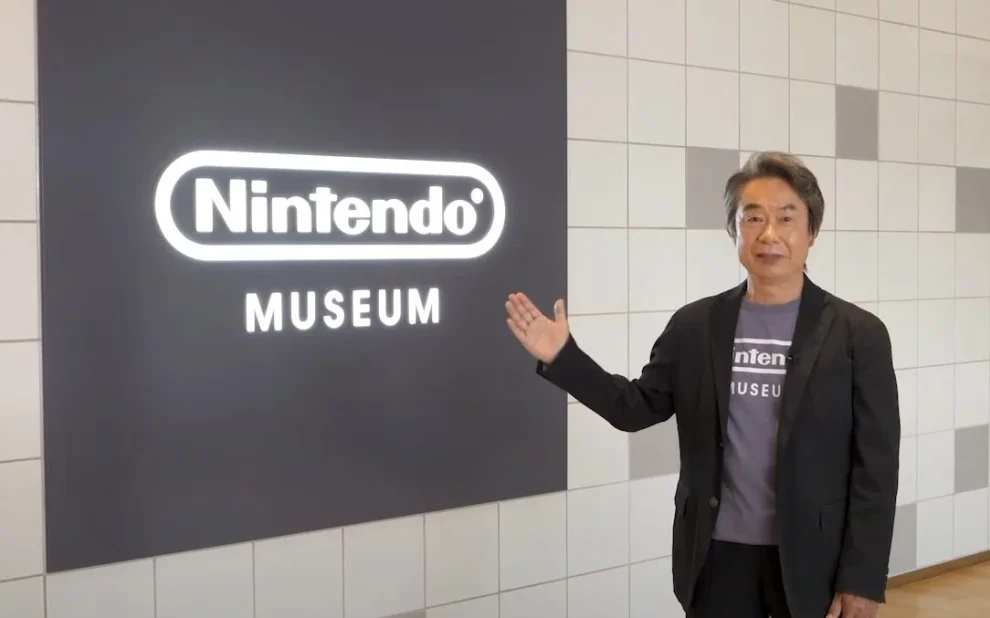The newly opened Nintendo Museum showcases a surprising collection of never-before-seen hardware prototypes, offering fans a unique glimpse into gaming history.
As I stand in the bustling halls of the newly opened Nintendo Museum in Kyoto, Japan, there’s an electric atmosphere of excitement and nostalgia in the air. Today, October 5, 2024, marks a historic moment for gaming enthusiasts worldwide as the museum reveals an unexpected treasure trove of hardware prototypes, many of which have never been seen by the public before.
A Surprise Addition to the Nintendo Museum
Just days before the official opening, Nintendo made a surprising move by adding numerous hardware prototypes to the museum’s exhibits. This decision has effectively addressed one of the key concerns raised by critics – that the museum didn’t delve deep enough into Nintendo’s rich history.
“We wanted to give our fans something truly special,” explains Shigeru Miyamoto, the legendary game designer and senior executive at Nintendo, who I managed to catch for a brief comment. These prototypes offer a unique window into our creative process and the evolution of gaming technology.
As I make my way through the “Storage” exhibit on the second floor, I’m struck by the breadth of Nintendo’s innovative history on display. The prototypes span from the early days of the Super Famicom to the more recent Wii U era, offering a comprehensive timeline of Nintendo’s hardware development.
One of the first visitors to the museum, a user known as FarmboyinJapon on social media, has provided detailed notes on the prototypes. While photography is strictly prohibited, his descriptions paint a vivid picture of these fascinating artifacts.
Iconic Consoles Reimagined
Among the most intriguing displays is a prototype Super Famicom with striking red buttons, a design choice that diverges significantly from the final product. Nearby, a collection of Ultra 64 controller prototypes (bearing the pre-N64 label) showcases the evolution of Nintendo’s revolutionary analog stick design.
It’s incredible to see how close some of these designs were to the final product, and how radically different others were,” remarks Kenji Tanaka, a gaming historian I encounter in the exhibit. “It really gives you an appreciation for the iterative design process.”
Experimental Designs: From Fidget Spinners to Vertical Handhelds
As we move through the exhibit, the prototypes become increasingly experimental. A Wii Remote shaped like a fidget spinner and a giant D-pad covered in buttons highlight Nintendo’s willingness to think outside the box.
Perhaps the most surprising prototype is a Game Boy Advance designed for one-handed use. “It’s about the size of a GBA Micro, but with a vertical layout and a tiny D-pad/scroll wheel,” explains Tanaka, sketching the design in his notebook. It’s fascinating to think about how different handheld gaming might have been if this design had made it to production.
The Evolution of Dual-Screen Gaming
One of the most tantalizing prototypes on display is an early version of the Nintendo DS. Unlike the vertical clamshell design we’re familiar with, this prototype opens horizontally, with D-pads and buttons on either side.
It looks remarkably like an early version of the Switch,” notes Emma Chen, a game developer visiting from San Francisco. “It’s amazing to see how ideas can evolve over time and resurface in unexpected ways.”
Transparent Glimpses into Gaming History
Several prototypes offer literal transparency into Nintendo’s design process. A greenish-blue GameCube prototype with a slightly transparent casing reveals its empty interior, while a clear plastic Virtual Boy headset provides a unique look at the inner workings of this infamous console.
“These transparent prototypes are a goldmine for understanding the engineering challenges Nintendo faced,” says Dr. Hiroshi Yamada, a professor of game design at Kyoto University. They offer valuable insights into the technical evolution of gaming hardware.”
As I conclude my tour of the prototype exhibit, I’m struck by the human element evident in these early designs. Clay molds, hand-drawn sketches, and roughly assembled prototypes all speak to the creative process behind Nintendo’s iconic hardware.
What’s remarkable about these prototypes is how they showcase the iterative nature of design,” reflects Miyamoto as we chat near the exit. “Each piece represents countless hours of brainstorming, experimentation, and refinement. It’s a testament to the dedication and creativity of our teams over the years.”
The addition of these hardware prototypes to the Nintendo Museum marks a significant moment in gaming history. By offering fans a behind-the-scenes look at the evolution of their favorite consoles and controllers, Nintendo has not only addressed initial criticisms but has also created a truly unique and engaging experience.
As visitors stream out of the museum, the buzz of excitement is palpable. Conversations are alive with speculation about what these prototypes reveal about Nintendo’s design philosophy and what they might suggest about the company’s future innovations.
While photography remains prohibited, the detailed descriptions and hand-drawn approximations shared by early visitors like FarmboyinJapan ensure that gaming enthusiasts worldwide can share in the excitement of these revelations.
As the sun sets on this historic day in Kyoto, it’s clear that the Nintendo Museum has succeeded in offering more than just a trip down memory lane. By unveiling these never-before-seen prototypes, Nintendo has provided a fascinating glimpse into the creative process behind some of gaming’s most iconic hardware, inspiring a new generation of designers and reminding us all of the human ingenuity that drives technological innovation.
















Add Comment